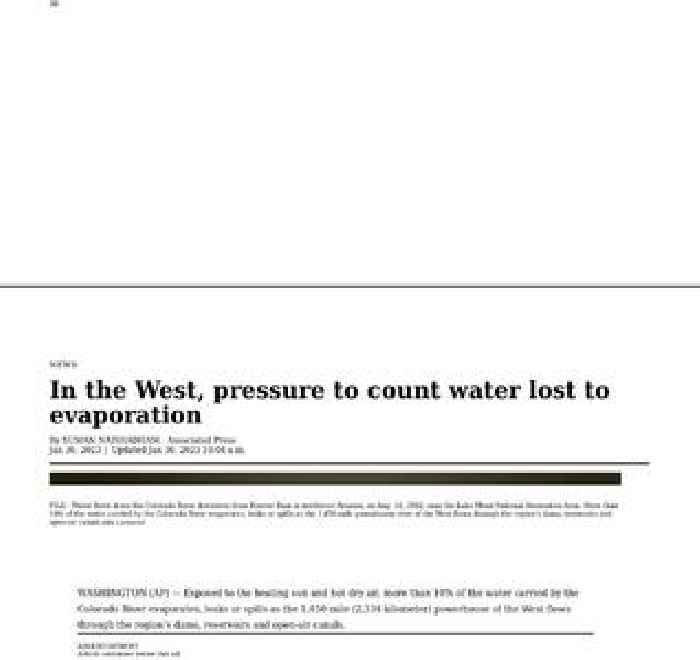
In the West, pressure to count water lost to evaporation

WASHINGTON (AP) — Exposed to the beating sun and hot dry air, more than 10% of the water carried by the Colorado River evaporates, leaks or spills as the 1,450-mile (2,334-kilometer) powerhouse of the West flows through the region’s dams, reservoirs and open-air canals.
For decades, key stewards of the river have ignored the massive water loss, instead allocating Arizona, California, Nevada and Mexico their share of the river without subtracting what's evaporated.
But the 10% can no longer be ignored, hydrologists, state officials and other western water experts say.
The West's multi-decade drought has sent water levels in key reservoirs along the river to unprecedented lows. Officials from Nevada and Arizona say that they, together with California, now need to account for how much water is actually in the river.
The challenge is in finding a method that California also agrees to.
“It’s very hard to get consensus,” said Sarah Porter, director of the Kyl Center for Water Policy at Arizona State University. She thinks it's unlikely that states will reach an agreement on their own, without federal intervention.
Unlike Arizona, California, Nevada and Mexico, the upriver or Upper Basin states — Colorado, New Mexico, Utah, and Wyoming — already take into account evaporation losses.
Now with a looming federal deadline for Colorado River basin states to say how they'll use at least 15% less water from the river, there's renewed urgency for Arizona, California and Nevada to factor in what's lost to evaporation.
One proposal comes from Nevada: States at the end of the river would see their Colorado River portion shrink based on the distance it travels to reach users. The farther south the river travels, the more water is lost as temperatures rise and water is exposed to the...



